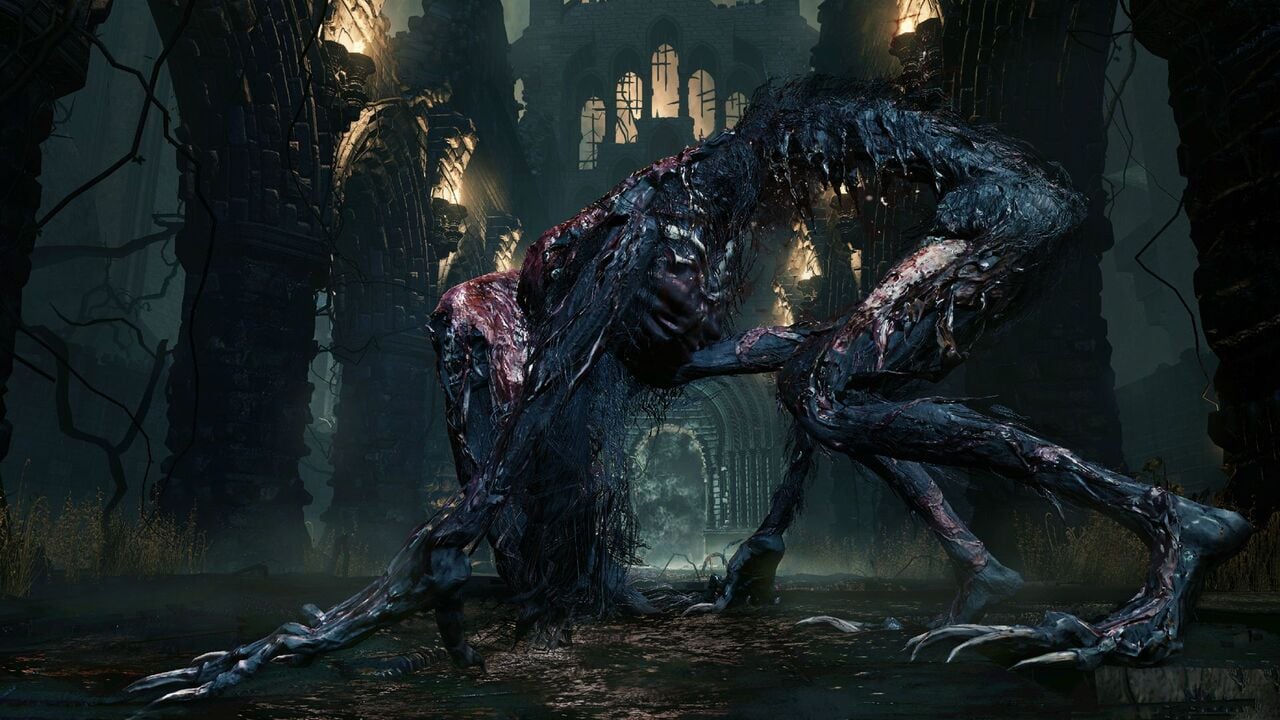

Going through a level once teaches you to anticipate them, but some may still sneak up on you. There's also a stamina meter to be mindful of, since each dodge and attack takes a little bit away, and you may find yourself surrounded without the strength to run or fight back.Īdditionally, players need to be on the lookout for enemies that hide and leap out at you from fixed locations. It only takes a few good hits to finish you, and enemies can back you into corners and objects to lock you in there. Even with the long reach of transformed weapons, it's not a good idea to fight large groups in Bloodborne. Enemies don't call for reinforcements, at least not the ones I fought, but nearby fighting will catch their eye and they'll shamble at you in groups. Then I would charge my strike as it shambled towards me, and often kill things with one hit. Fortunately, enemies don't tend to notice a lot, so it's not a lot of trouble to throw a rock at one to catch its attention. In the early demo I played, I managed to find my way to a large bonfire with enemies crowded around it. If found that the best strategy is to try to pull individual enemies away from the group and to fight them one or two at a time. Players will also need to keep an eye out for loot, and strategize on when to use items like Molotovs, healing, and rocks to draw out enemies. For an added advantage, I explored the environment and found multiple approaches to some key areas. You have to know when to dodge, time your attacks, and realize when it's time to make a tactical retreat. This isn't a game where dashing into large groups and mashing the attack button will get you very far. After playing all four, my favorite weapon ended up being the axe, since it balances well between speed and power, and transforms into a two-handed great axe.Īlthough Bloodborne's combat is supposedly faster than its spiritual predecessor, Demons Souls, it is still a remarkably paced game.

Perhaps no weapon illustrates the transformation better than the Kirkhammer, which starts off as a one-handed broadsword that is inserted into a massive stone hammerhead. For example, my gun could be switched to a torch, to light up darkened areas and set enemies on fire.Įach weapon has a secondary transformation mode, which puts away the defensive gun for an all-offensive gameplay style. A player would generally use them to push an enemy back for breathing room or for a hasty escape, not necessarily to pick enemies off from afar. However, the guns are meant for defensive use, as they tend to have short range, little ammo, and deal relatively low damage. Each weapon determines the character's attack speed and is complimented with an off-hand ranged weapon like a blunderbuss or pistol. They included a cleaver, axe, twin blades, and a giant Kirkhammer. No easy task, since these crazed mutant townsfolk tend to hit hard and have a nasty tendency to gang up on you.īefore starting the game, I was presented with four choices for weapons.

So, you have to battle your way through darkened streets using weapon-wielding skills and limited resources to find your prize. Unfortunately, it looks like the plague, which mutates its hosts into beasts and monsters, has already infected all of the townsfolk. It's about finding ways to progress a little further when you get back up.īloodborne takes place in the gothic town of Y'harnam, where a plague cure is rumored to be located. The game lived up to my expectations, but as with similar games, it's not about how many times you die. I went into playing Bloodborne at a New York PlayStation Preview event knowing that I would die, and that it would happen often.


 0 kommentar(er)
0 kommentar(er)
